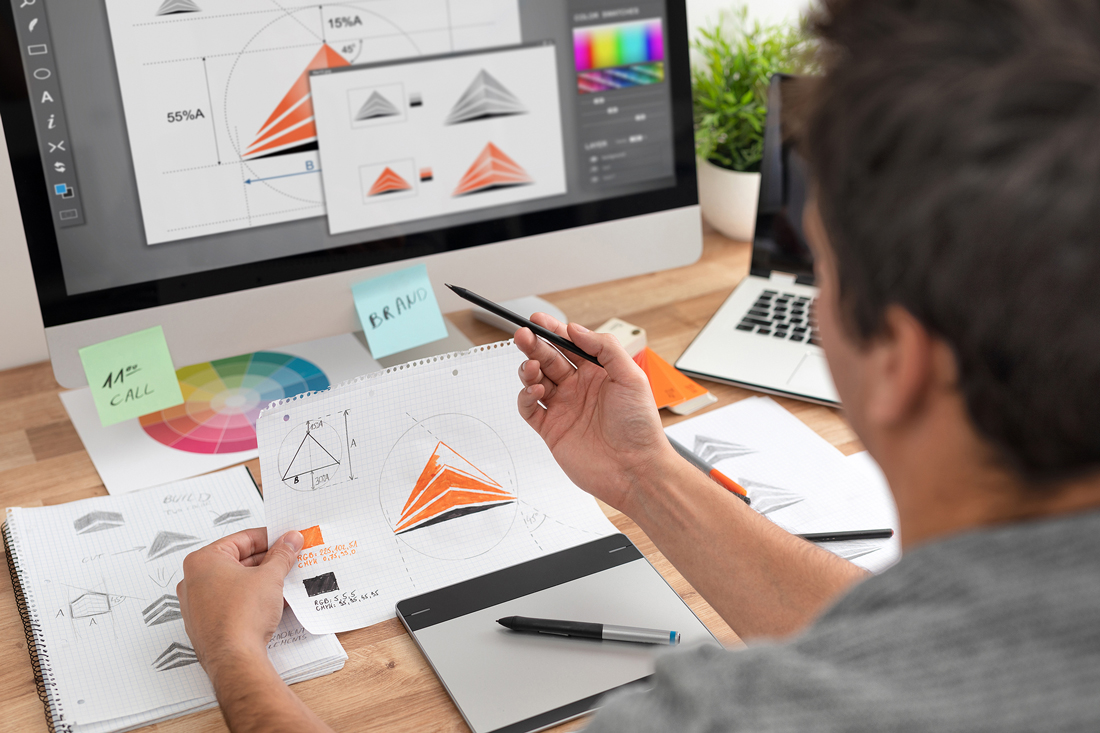BY SAMANTHA KNAPP-ANGELO
Over the last few months, it has been exciting to see how many new operators have joined the luxury ground transportation industry. If you are a new business owner, you have a lot of decisions to make, and one of those is your company’s branding—specifically your logo. And for those in business for a long time, you may be considering a rebrand and facing some of the same decisions.
Whether you’re working with a professional designer or taking a stab at it yourself, creating a logo may seem like a deceptively easy task, but there are many factors to consider when making an effective design. Colors, fonts, imagery, and layout must all come together to create an accurate depiction of your brand. It’s easy to make mistakes when it comes to logo design, but we’re here to go over some of the most common errors so you can avoid them when you are starting out or when you are updating yours in the future.
NOT Understanding Your Brand Identity
A logo is a visual representation of your values and identity, so it is important to sit down and determine all aspects of your brand before starting on a logo design. What are your values: professionalism, service, safety? What is your mission: providing the best in ground transportation to corporate travelers in your market? What makes your brand stand out against your competition: vehicle variety, experience, flexibility, customer loyalty? Creating a solid list of your core values will aid in making the right choices when it comes to your logo.
 NOT Researching Your Audience
NOT Researching Your Audience
Knowing and understanding your audience is the key to a successful brand, so of course you’ll need this information to create an effective logo. How old is your key demographic, or who are you trying to attract? What generations are they part of? Where do they like to shop, spend their spare time, travel to? What kind of colors and fonts are they attracted to? These factors will help you narrow down design choices.
NOT Choosing the Right Colors
Getting familiar with color psychology will help you accurately portray your brand. When you look at your values, you’ll be able to find a color that coincides with each one. For example, blue (which is also the most common logo color choice) symbolizes calmness, reliability, and friendliness. Are you a luxury brand? Then a black, red, or gold color palette may be something to consider since these colors are most often associated with affluence and luxury.
A signature color will increase your brand recognition, so it’s also important to limit your color choices. Too many will make a design appear busy and can be unappealing to the viewer. Sticking with one to three colors is usually ideal—unless your company has an intentionally multicolored brand inspiration such as a rainbow or the seasons.
NOT Choosing the Right Fonts
Fonts can make or break a design, so you’ll need to choose one that properly conveys your brand’s message. For example, serif fonts like Times New Roman, which have small decorative lines at the ends of the strokes that form the letters, are normally associated with luxury. And while sans serif fonts like Arial do not have the decorative flourish, they are often perceived as more friendly. You’ll also need to take readability into consideration, so be careful with abstract, script, or custom fonts. It’s important that your logo is recognizable at a variety of sizes (and in grayscale), so you’ll want to choose a font that is easy to read, big or small.
NOT Keeping Your Design Simple
When it comes to logos, less is more. Try not to incorporate too many ideas into one small area, which can make your logo difficult to use on textiles or small places. Logos with many colors or too many graphic elements can actually turn people away. Instead, focus on your most important values and create a strong, simple, striking graphic. You don’t have to be cliche, but it should be appropriate.
NOT Differentiating Yourself
There are free and low-cost websites that will help you create a logo, but chances are great the logo will look like so many others, or will reflect the trends of the time when your goal is to be timeless. Since your logo helps you stand out from the crowd, you don’t want to use a template used by hundreds of other companies. Ideally, you should create a handful of logos and walk away. Which one resonates in your mind? Which one do others remember?
Knowing common mistakes and how to fix them is one step in the right direction to creating a bold, effective logo. A professional graphic designer is trained to keep all these different elements in mind and can help you every step of the way. [CD0523]
Samantha Knapp-Angelo is a creative graphic design assistant with The LMC Groups. She can be reached at samantha@lmcspotlight.com.

